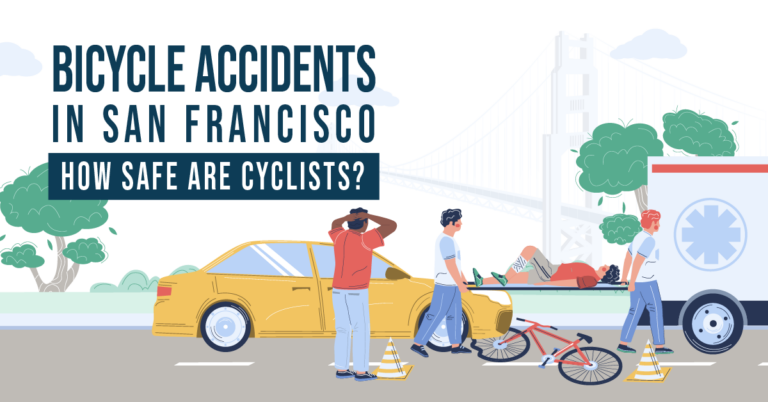
If the other driver has insurance, many people assume they do not need a car accident lawyer. They expect the other driver’s insurance company to pay their bills. They may even be vaguely aware of California bad-faith insurance laws. These provisions require Orange County insurance companies to quickly settle matters if liability is not an issue. But as Alexander Pope observed many years ago, “A little knowledge is a dangerous thing.” These beliefs are simply not accurate.
If the other driver has no insurance, many people also assume they do not need a lawyer. They figure if there is no individual insurance policy, there is no point in filing a claim. Once again, that’s simply not true, in many cases.
An attorney does a world of good in both these situations, both by obtaining evidence necessary to support the claim and finding a legal theory of recovery that fits the available facts.
The Burden of Proof in California Negligence Cases
Victim/plaintiffs must establish liability by a preponderance of the evidence (more likely than not). If the scales of justice tip ever so slightly in the plaintiff’s favor, liability is established as a matter of law.
In terms of the evidence in the case, the police report is usually an excellent starting point. In some cases, given the low burden of proof, this evidence alone may be enough.
But in most cases, more proof is necessary. Insurance company lawyers usually urge several defenses during the course of the proceedings. For the most part, only additional evidence can defeat these defenses. Furthermore, Orange County juries often link the amount of damages to the amount of the evidence. They award considerable damages where there is considerable evidence of fault, and lower amounts when fault is less certain.
Many times, this proof comes from sources that were the stuff of science fiction just a few decades ago. The Event Data Recorder is a good example. When the first EDRs appeared in the 1960s, these gadgets had virtually no capabilities at all. But today’s EDRs have expanded to the point that they are critical in many cases. Depending on vehicle make and model, these devices capture and record things like:
- Vehicle speed,
- Rate of acceleration,
- Steering angle,
- Impact angle, and
- Other key accident-related figures.
California has a very tough EDR privacy law. In most cases, an attorney must obtain a court order to inspect the device. Furthermore, many EDRs are technically complex. Only an attorney has the resources to download the information they contain.
All this assumes that an EDR is available in the first place. That may not be the case unless an attorney steps in immediately. Most insurance companies destroy totaled vehicles in a matter of days. They do not want to pay to store them. As a result, the EDR and any other physical evidence in the vehicle is destroyed as well.
To preserve evidence in the case, attorneys send spoliation letters to insurance companies. These letters create a legal duty for the recipient to preserve any potential evidence in the case. That includes the vehicle and its contents, such as the EDR. These letters are almost always effective because there are stiff penalties for noncompliance.
Available Legal Theories in California
A sculpture is just a hunk of marble before the artist begins work. Likewise, even the largest body of evidence is not much good without a skilled attorney. In terms of first party liability, most attorneys focus on one of the following areas of negligence:
- Operational: Speeding, running a red light, and other violations of “the rules of the road” are an excellent foundation for negligence claims. It’s easy for an Orange County jury to see the connection between the operational negligence and the victim/plaintiff’s damages.
- Environmental: The rules of the road are even more strict in some cases. For example, drivers have a responsibility to slow down in the rain or in darkness. Arguably, these responsibilities are even stricter for commercial drivers.
- Behavioral: Sometimes, negligence occurs before the tortfeasor gets behind the wheel. Juries tend to award large damages if something like alcohol use or excessive fatigue caused the damages.
Damages in a California car crash case include compensation for economic losses, such as medical bills, and noneconomic losses, such as pain and suffering.
These legal theories are even more important if the tortfeasor did not have insurance. In these situations, an attorney must turn to third party liability. There are a number of available theories in Orange County. Some of them are:
- Respondeat Superior: This theory applies in a lot of truck, taxi, bus, and Uber accidents. Employers are responsible for the negligent acts of their employees if those acts occurred within the course and scope of employment. California courts define all the relevant terms in very broad ways.
- Negligent Entrustment: Many owners who knowingly allow incompetent drivers to use their vehicles are liable for damages if those individuals cause car crashes. Commercial negligent entrustment cases (g. an incompetent driver rents a U-Haul truck and crashes it) work differently because of the Graves Amendment.
- Negligent Undertaking: Certain social hosts may be liable for damages in alcohol-related collisions.
Typically, if there are multiple responsible parties, the judge apportions damages among them based on their relative percentage of fault.
Reach Out to Experienced Lawyers
A highly-skilled attorney is the best way to obtain maximum compensation in a negligence case. For a free consultation with an experienced personal injury attorney in Orange County, contact RMD Law. Home and hospital appointments are available.
- Bicycle Accidents in San Francisco: How Safe Are Cyclists? - July 10, 2023
- 6 Ways Posting on Social Media Can Hurt Your Personal Injury Claim - July 5, 2023
- DUI Crashes in Sacramento: 6 Significant Numbers You Should Know - July 3, 2023


